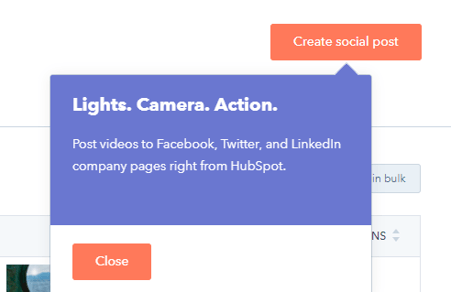According to the The Sophisticated Marketer’s Guide to LinkedIn, over 65% of companies have acquired a customer through LinkedIn. Additionally, 66% of LinkedIn users report that they see 'good' results from the site - whilst 94% of companies use it as a B2B marketing tactic.
Clearly, LinkedIn is a great platform, especially for B2B companies. But this isn't anything new – it’s a social media platform for professionals and a gold mine for business exposure and connections. It's one of the top three drivers of traffic to websites along with Twitter and Facebook.
But while lots of businesses around the world are focusing their efforts on growing an audience on these platforms, it's not as easy as it once was. When social media was 'new', it was relatively easy to grow an audience with fresh new content - in 2018 it's much harder.
That doesn't mean that you should stop trying to build an audience, it just means that you need to work extra hard to create connections and increase engagement.
One way that businesses around the globe are doing this is by posting on behalf of their employees; using their employees' personal accounts and social accounts to promote and amplify the business' content.
Many of your business' spokespeople will have hundreds of connections and followers on social channels, and if you are only posting from your business' social account, you are missing out on opportunities to engage with a wider audience and grow your business' following.
By promoting from your own account - as well from the accounts of your spokespeople - you have access to a whole new audience – an audience you’re connected to that has an interest in what your sharing. And as you are already connected with these people, they are much more likely to share, comment and re-post your content!
Sounds easy, right?
Well not quite.
As a marketing manager, getting your CEO to start regularly posting quality content and posts onto their social channels isn't easy; it's time-consuming and requires dedication - but you can help them out.
By using a social media automation tool, your marketing team can act on behalf of your CEO, posting pieces of content, re-sharing company posts that are of interest to his or her audience, and liking and commenting on other posts.
And this shouldn't stop at your CEO.
Depending on the size of your company, you may also have a number of directors and board members, all with their own connections and followers. So many opportunities to reach new audiences!
To help you establish this process for your business, we'll run through a short guide - but just to back up our claim, we started posting properly for our account management team a few months ago - and within four weeks, we managed to quadruple the number of visits to our website via social media channels.
How does this work in practice?
1. Agree the ground rules
Those who are responsible for your business' social media promotion should also be skilled content writers. Before you draft any social media, you should have an initial meeting to discuss tone of voice and messaging to ensure everyone is on the same page. The marketing team should also study previous posts and language to ensure that messaging is consistent.
2. Draft social posts
We would always recommend drafting social media posts in bulk, as you can then schedule them in bulk. This saves you a considerable amount of time and once you've scheduled them, you can then sit back knowing that the posts will go out at certain times on certain days - you just need to be ready to engage!
In the beginning, we would advise that you send your draft social media posts to the spokespeople you will be posting on behalf of, as they will be able to provide feedback and pointers. As you learn more about how your spokespeople would like their posts to be written, it becomes easier. If the initial posts you draft for them don’t get completely rewritten after the first few reviews, then you’re definitely on the right track!
After a few weeks, you can skip out the initial review phase and just send over a link to the scheduled posts just for a quick check!
3. Schedule the posts
Once you've got the thumbs up that your posts are good to go - you need to schedule them using your social tool of choice. HubSpot is a fantastic option here as it has the ability to quickly and easily schedule social posts in bulk for Facebook, Twitter, LinkedIn, Instagram and even Google+.
It's always worth getting someone in your team to double-check all the posts once they've been scheduled, just to ensure that they have the correct links, that all the information is correct and that they are being posted at sensible times.

4. Send an internal email asking for checks
So you've drafted the posts and scheduled them in your social tool. Great.
Now you need to tell people when they are going live. Send an email to your spokespeople with a link to double-check their posts. Encourage them to view and edit them if they’d like – as the posts are theirs – and give them enough time to check. Ideally, you want to give them two or three days to check because they might miss your email or be too busy to check right away!
5. Provide feedback on success.
Once all of this is done, you should encourage your spokespeople (and colleagues) to be active on their social media accounts and post regularly; but not just to promote your current business activities but in general. Once you report on the success of your social media marketing efforts, it might encourage others to start promoting business activities themselves too.
We get that building an audience and keeping them interested on personal and company profiles is hard. When social media was new, it was very easy; everyone would follow and engage with everyone, but that’s not the case in 2018.
You should encourage everyone in your company to be active in your business. If some can’t commit or find the time, then make their lives easier by managing it for them, and help them to build an audience and lasting relationships through social media. Help your main spokespeople out by writing for them. By managing everyone’s social media, you ensure there’s valuable content going out on a regular basis – anything they can add on top of that is a bonus.








.png)





